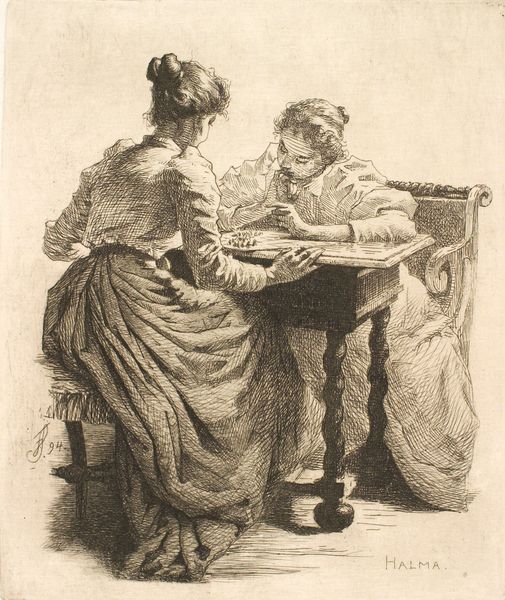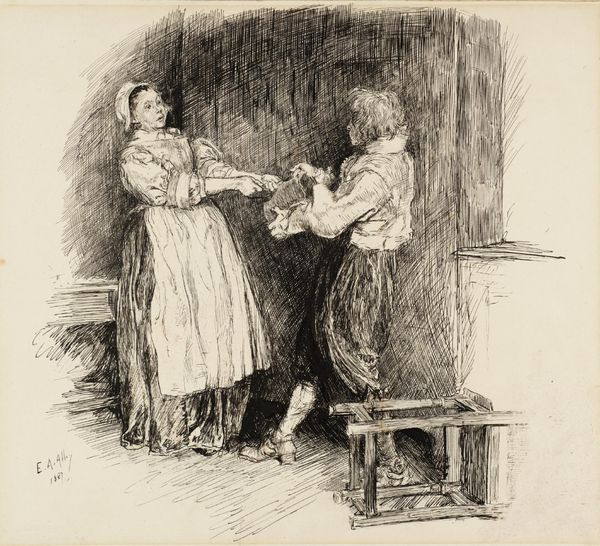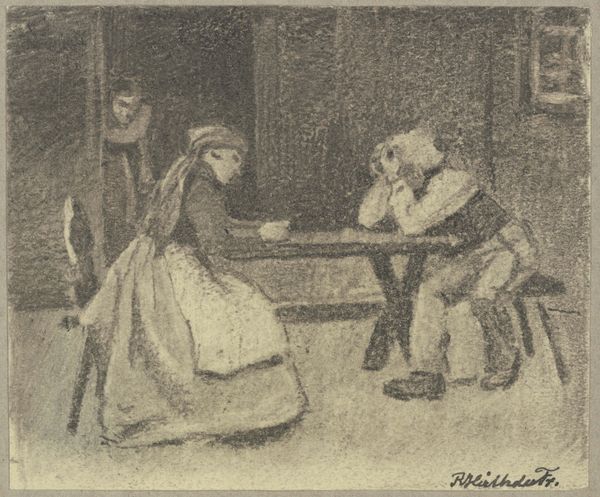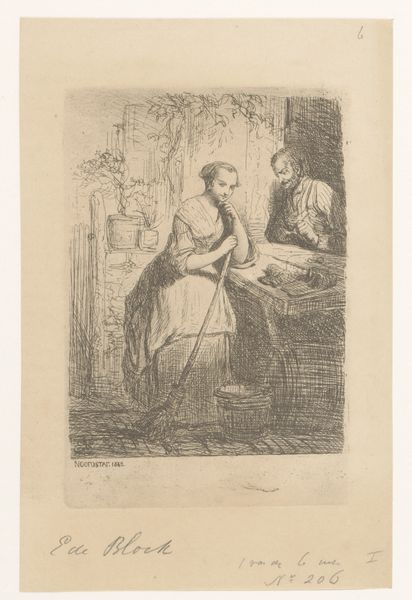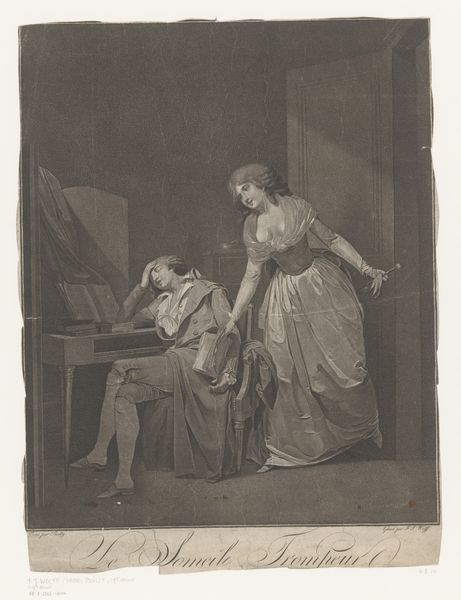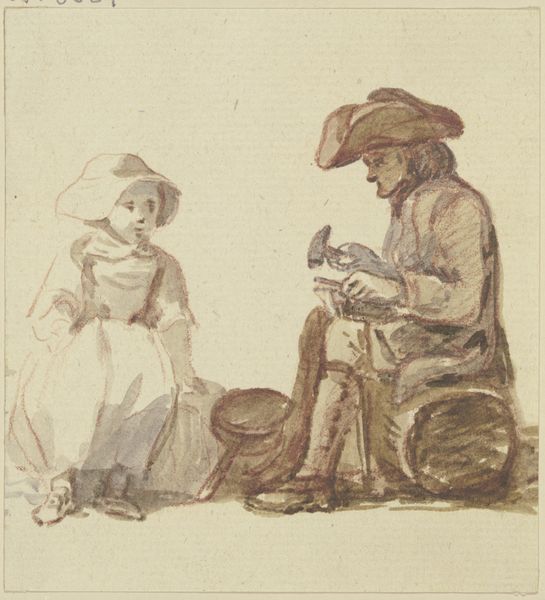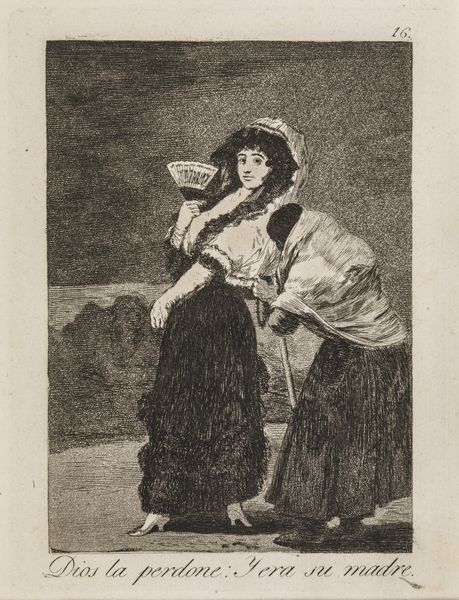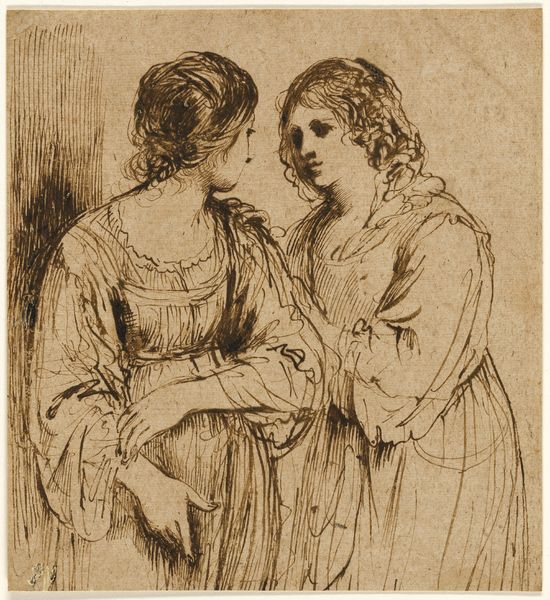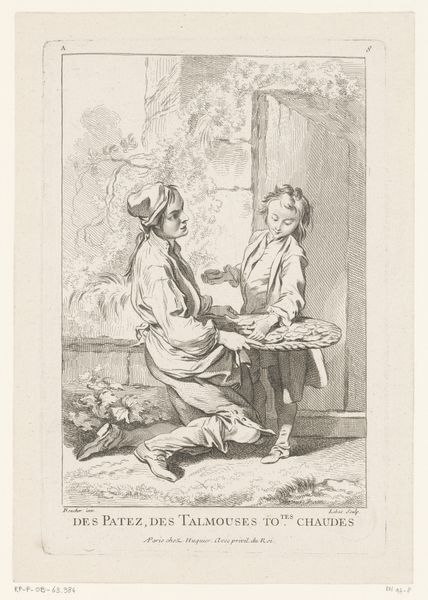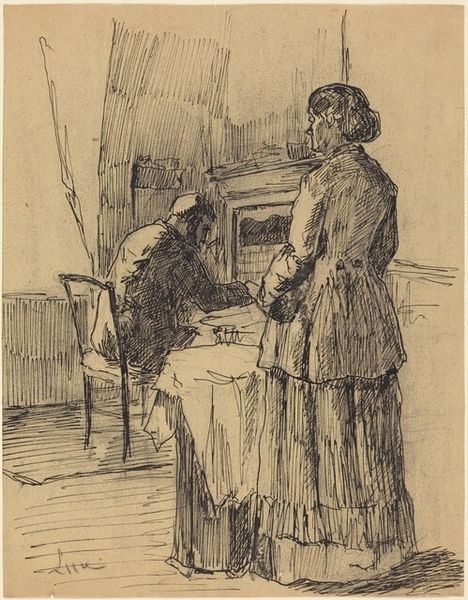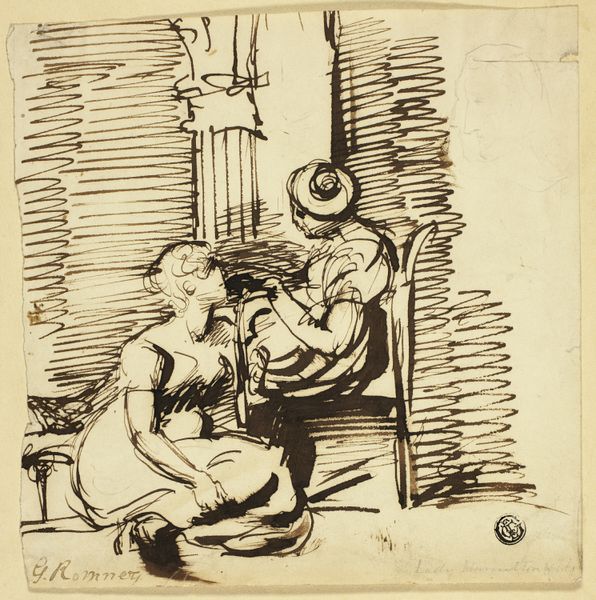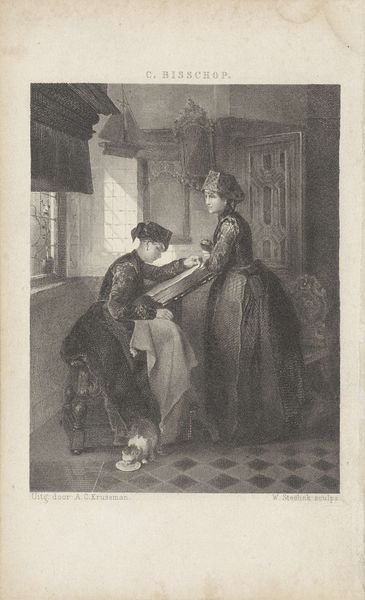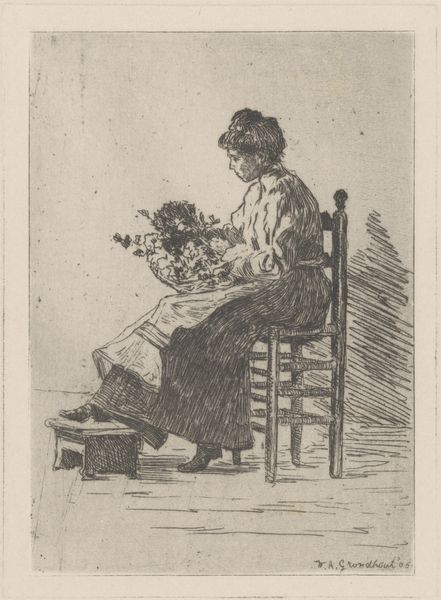
Dimensions: 172 mm (height) x 144 mm (width) (plademaal)
Editor: This is "Halma," an etching by Frans Schwartz from 1894. I find the scene quite intimate; two women are engrossed in a board game. What social dynamics are at play here, Curator? Curator: Indeed, "Halma" offers a fascinating glimpse into leisure activities and the social roles of women in the late 19th century. Genre paintings such as this were popular, reflecting the increasing visibility, yet simultaneously restricted participation, of women in the public sphere. How might we interpret this seemingly mundane game within the broader social and political contexts of the time? Editor: I hadn't thought about it in relation to those social restrictions. Their clothing also looks fairly formal, and they’re seated at a fairly solid-looking table. It seems less spontaneous, more like a carefully scheduled visit. Curator: Exactly! Consider also that such artworks often catered to a burgeoning middle class with increasing purchasing power and an interest in representations of their own domesticity and social interactions. The artwork thus plays a role in constructing and reinforcing those identities. Do you notice how the details are etched, giving the impression of texture and volume to their dresses and the furniture? Editor: It gives it all a very intimate feel, yes. Like peering into someone’s home. Did Schwartz create this with the explicit purpose of commenting on women’s roles, or is the social aspect more coincidental? Curator: Intentions are always difficult to definitively ascertain, but genre paintings, especially those circulating through print, often served as vehicles for conveying social values and expectations, whether consciously or unconsciously. Prints make the art piece accessible to wider groups of people. And those groups were ready for such artworks that mirrored their everyday existence. Editor: This gives a whole new layer of complexity to a seemingly simple etching. I will think more about the audience and wider context going forward. Curator: Precisely, and recognizing how images are actively shaped by cultural and social forces enriches our appreciation and critical understanding.
Comments
No comments
Be the first to comment and join the conversation on the ultimate creative platform.
